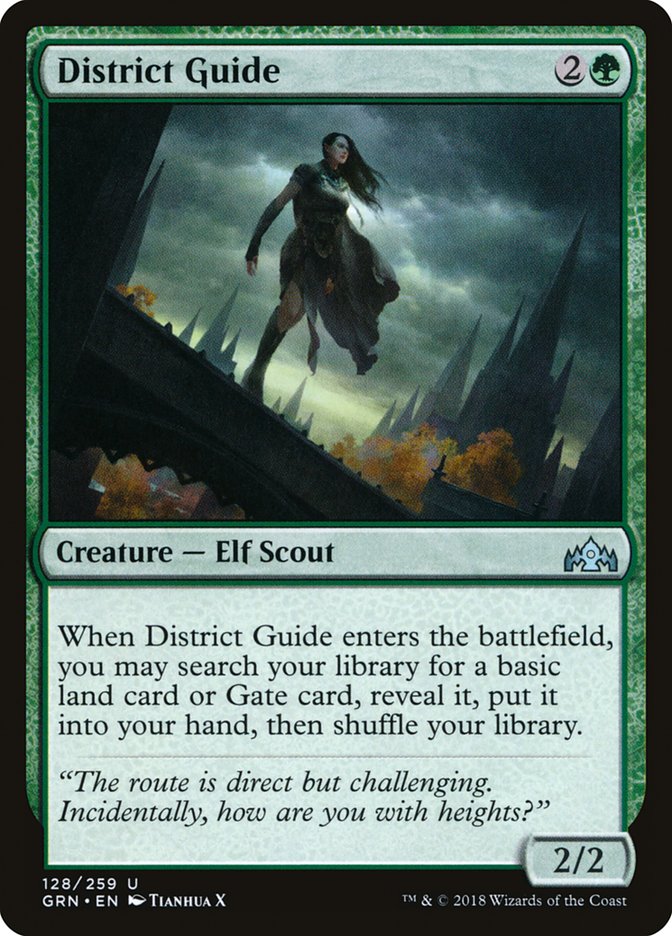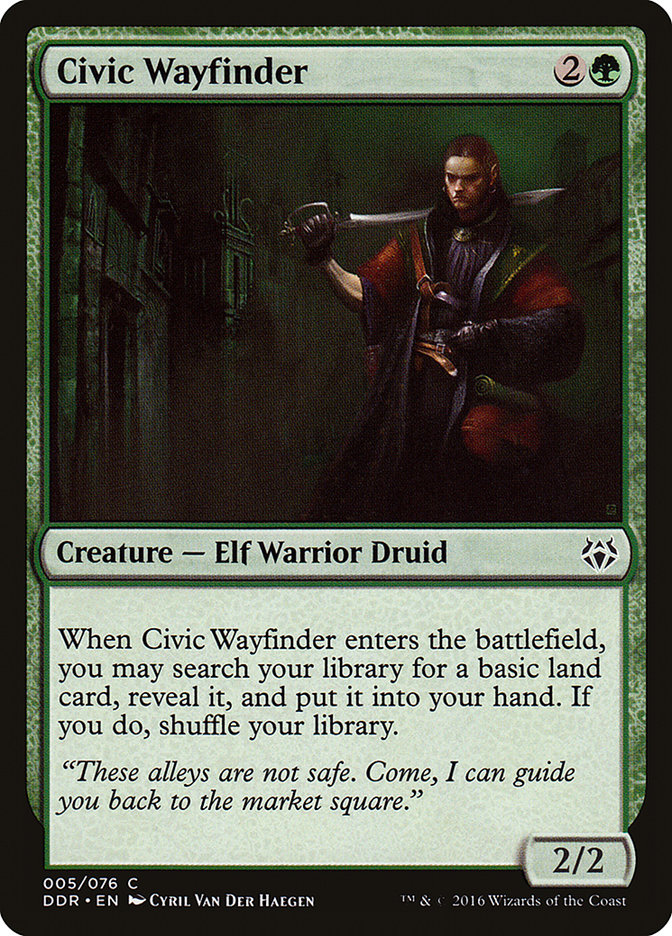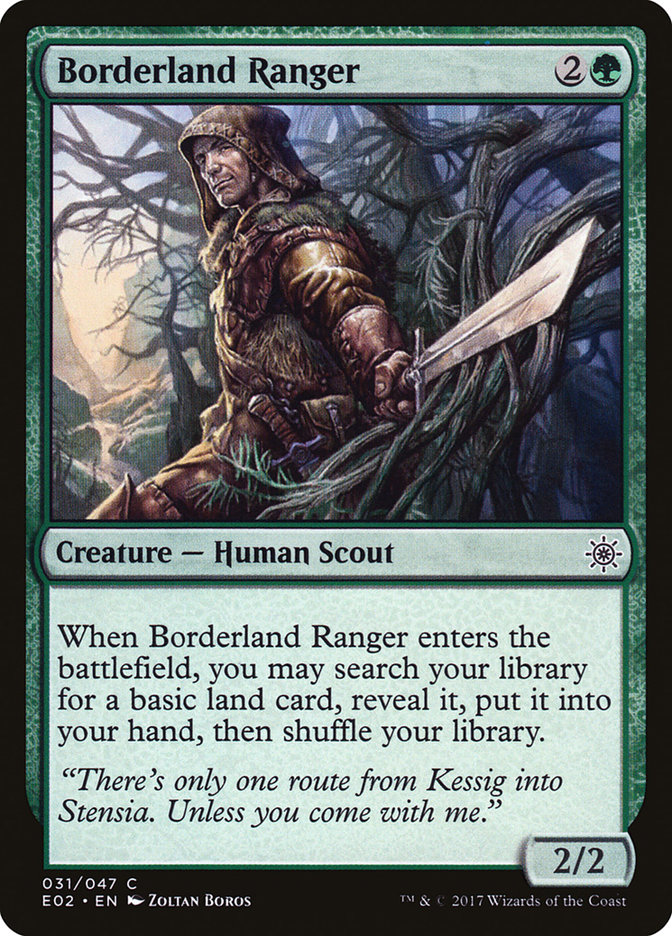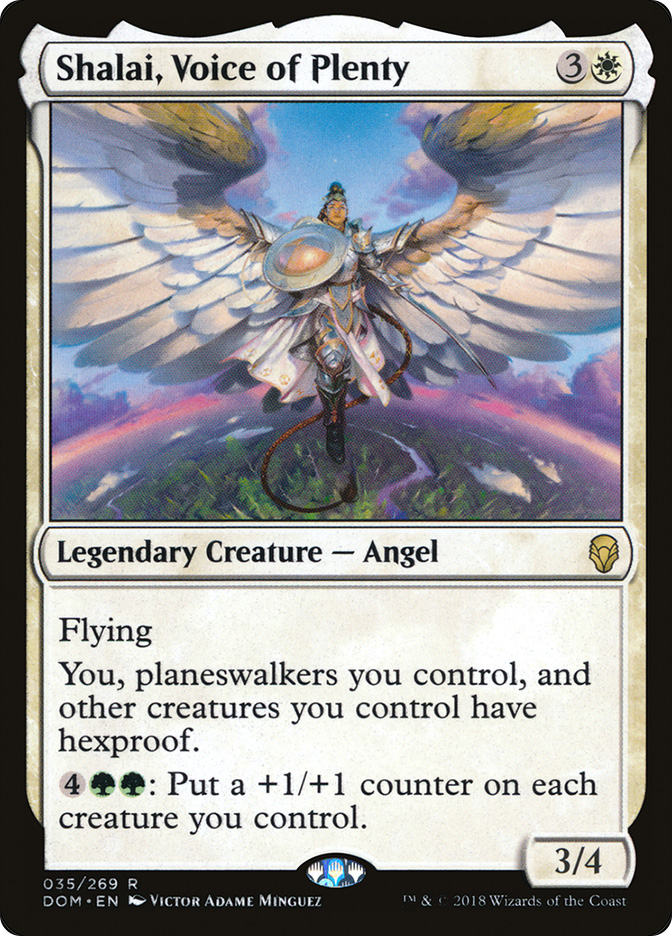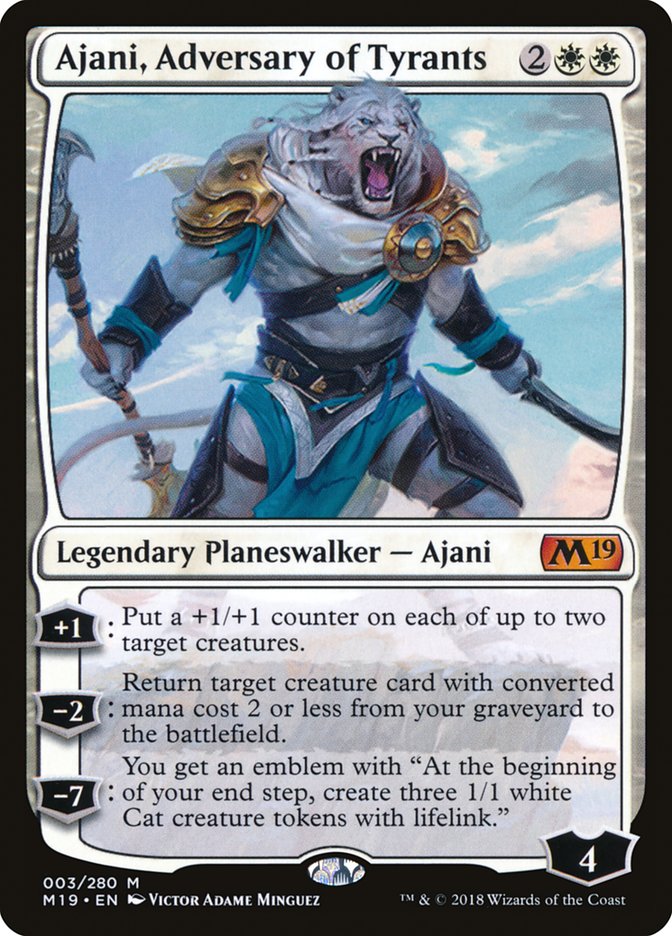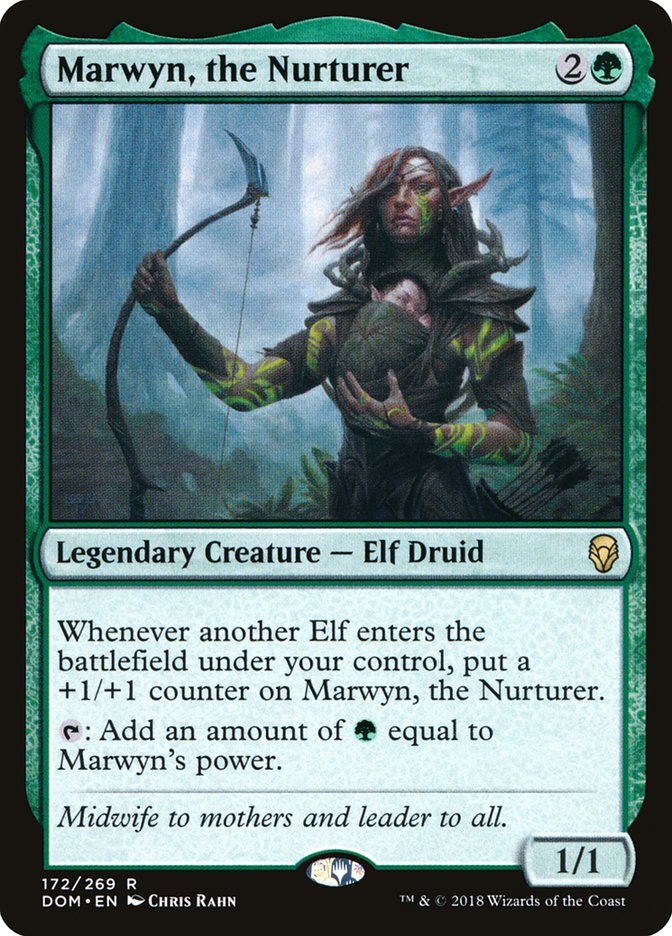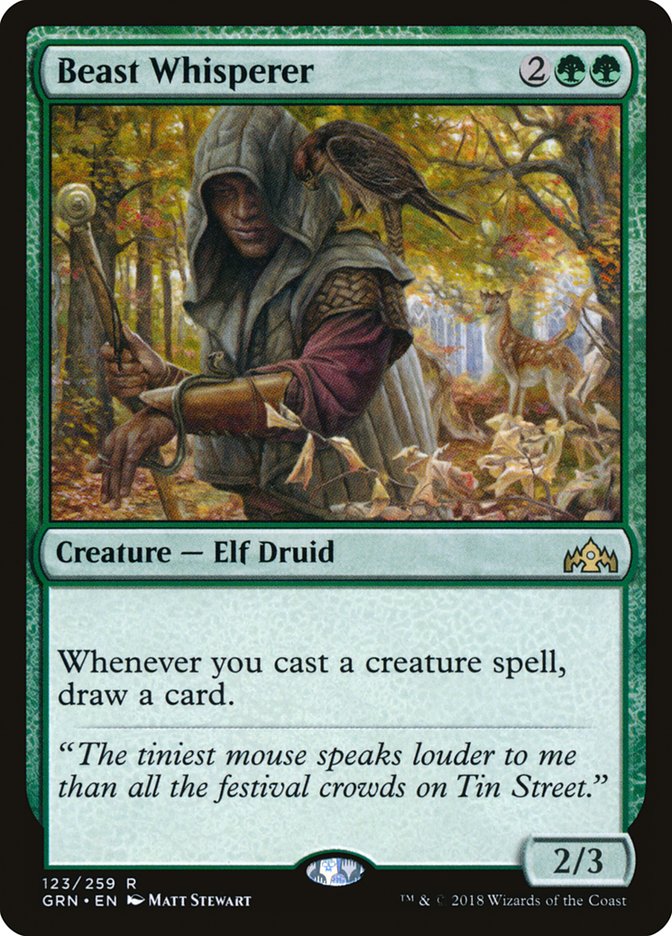For years I never really thought of myself as “The Elves Guy,” even though
that’s by far the deck I’m most associated with. Even now, almost four
years after putting the deck away in Legacy, I still hear players surprised
I’m not playing it at a Legacy event. But for me, it was just another deck
I played for a while and then put down. Just like U/W Delver, Maverick, or
Mono-Blue Devotion.
But maybe there’s something about the tribe that really speaks to me.
Because my recent foray into Modern Elves has been great, and not just
because it led to a couple more top 8s on my resume’. There’s something
about a horde of small creatures coming together to make a ton of mana and
overrun the opponent. I want to root for the small and the downtrodden to
band together and vanquish their more powerful enemies. There’s nothing we
can’t accomplish if we work together.
So, now that I’ve worked from Legacy to Modern with my clan of choice, the
next and final frontier is Standard. For a Standard format that will
feature multiple sets without Elves, there are a surprising number of tools
for the tribe right now, particularly with the Llanowar Elves and Steel
Leaf Champion, two cards that already served as key pieces of a proven deck
over the last few months.
However, the idea of building, in Standard, an Elf deck like we see in
Modern or Legacy – that is a deck built around powerful synergies and a
large pile of cheap creatures – is a non-starter. Standard isn’t big enough
to have the volume of pieces necessary to make that style of deck work.
Fortunately, all is not lost. Because the most success Elves has ever had
in Magic came in Standard a decade ago, and that deck was a different style
as well:
Creatures (24)
- 4 Llanowar Elves
- 4 Civic Wayfinder
- 1 Boreal Druid
- 4 Tarmogoyf
- 4 Imperious Perfect
- 4 Wren's Run Vanquisher
- 3 Chameleon Colossus
Planeswalkers (2)
Lands (20)
Spells (14)
Sideboard

Charles Gindy’s Pro Tour winning list utilized some quality Elves, but it
was also a Thoughtseize + Tarmogoyf deck with good removal and a ton of
utility lands to prevent flooding. There’s card advantage from Profane
Command, Civic Wayfinder, Imperious Perefect, and Garruk Wildspeaker as
well. This deck was an aggressively-slanted midrange deck, closer to Modern
Jund than it is to any deck with Ezuri, Renegade Leader.
The other thing you’ll notice is that the tribal payoffs in Gindy’s deck
are rather small. You need a certain volume of Elves to make Wren’s Run
Vanquisher consistently castable on turn 2 and for Gilt-Leaf Palace to
enter untapped early, but past that there’s just Imperious Perfect. It’s
this set up of quality cards with a touch of tribal synergies and good
removal that I’ll be trying to emulate.
So I owe a debt of gratitude to Wizards of the Coast for making that task
so easy. Llanowar Elves is already in Standard, Steel Leaf Champion isn’t
quite up to the level of Tarmogoyf but is still a proven beefy creature,
and Elvish Clancaller fills in admirably for Imperious Perfect. Once again,
it’s not quite as powerful, but I’m not trying to build a deck that can
beat Faeries consistently so I’m not worried about the downgrade. A
two-mana lord is already strong with a high enough density of Elves around
it, and I want plenty of mana sinks in my midrange decks post-rotation, not
only to mitigate against mana flood but to punish the abundance of Settle
the Wreckages and Assassin’s Trophies that will undoubtedly be running
around after release.
Civic Wayfinder was the card that fed the mana sinks in Gindy’s deck, and
it looks like it’s gotten a promotion in our time away:
This is as close to strictly better as cards get. We don’t get any of that
sweet, sweet Warrior or Druid synergy, but the most important type is still
there and that’s all that matters. The ability to tutor for a Gate is nice,
though I’m not sure it’ll be worth putting any into your deck since the
Guildgates are generally weak in Constructed. I’ll be keeping them to an
absolute minimum, but I’m leaning towards wanting them so it can
simultaneously find a splash color and a third green mana for Steel Leaf
Champion.
Given that the card already costs three, you’re already likely to have one
or the other by the time it’s cast, but I’m going to try it at first to see
how often it’s relevant. Also, if we get any other sweet Gates, which has
been hinted at by Gateway Plaza, I’m going to have a lot of fun registering
this one for months on end.
Civic Wayfinder and Borderland Ranger were both underrated cards that made
their way into Constructed because of how much consistency they add to a
deck. As long as you can protect against flooding, and we’re already on the
way towards that with Elvish Clancaller, the extra resource is also
valuable, and the 2/2 body is more than serviceable when we have a set of
lords. That said, even if Elf tribal decks don’t pan out, I expect to see
District Guide show up in Guilds of Ravnica Standard.
So just in Green there’s a core of Llanowar Elves, Thorn Lieutenant, Elvish
Clancaller, District Guide, and Steel Leaf Champion. That’s a strong start,
and with Selesnya and Golgari as the green guilds in Guilds of Ravnica, I’m going to start by looking at those two
potential splashes.
Both provide another quality Elf, white with Emmara, Soul of the Accord and
black with Underrealm Lich, along with an excellent removal spell in
Conclave Tribunal and Assassin’s Trophy, respectively. Emmara moves the
deck to a more aggressive posture with less removal and more cheap
creatures while the black cards go bigger with more card advantage and
heavy-hitters.
Both lists have their strengths and weaknesses, so let’s dive right in,
starting with white:
Creatures (27)
- 4 Llanowar Elves
- 4 Steel Leaf Champion
- 3 Shalai, Voice of Plenty
- 4 Elvish Clancaller
- 4 Thorn Lieutenant
- 4 Emmara, Soul of the Accord
- 4 District Guide
Planeswalkers (2)
Lands (10)
Spells (21)

I wrote about the convoke mechanic
last week
, noting that the power of Conclave Tribunal was the best payoff for decks
that commit to cheap creatures in Selesnya, and that hasn’t changed. This
deck is more synergy-focused than Gindy’s deck with the token generators
and anthem effects offering a go-wide strategy that you can set up if
you’re unable to get aggressive early, but the cards are still powerful
enough to stand on their own.
The splash cards, which comprise the high end of the deck’s curve, all
supplement that plan nicely, with Shalai, Voice of Plenty and Ajani,
Adversary of Tyrants both serving as anthem effects while the singleton
March of the Multitudes is a powerful lategame army in a can option, even
if it’s not making Elves.
Playing double-colored cards alongside Steel Leaf Champion is certainly a
risk, but the fixing from District Guide helps a lot here, The manabase has
22 green sources, which is enough consistently cast Llanowar Elves and
Steel Leaf Champion on curve, but leaves you light on white with only
eleven sources. District Guide fills the gap, allowing you to have the
white you need on turn 4. Also, it’s important to note that Emmara and her
Soldier tokens can be used to convoke for white mana for the March of the
Multitudes and Conclave Tribunals, so it’s the Ajanis that stress the mana
most.
It’s possible that you need to cut them, but I think they play very well in
a deck with several good two-drops to recur, two of which have mana sink
abilities so they get better as the game goes long, as well as many ways to
accumulate free bodies to target with the +1 ability. Those 1/1 tokens
typically won’t look like much, but when they start becoming 2/2s and 3/3s
they can trade for whole cards from the opponent, so having plenty of ways
to upgrade them is important.
With the number of mana sinks in the deck, I wanted a way to supercharge
them independent of the opponent, so I’m looking to Growing Rites of
Itlimoc. You’re not going to transform it that early, but doing so on turn
5 or 6 can shut the door once you’re ahead, and digging for Shalai, Voice
of Plenty, your best mid-late game creature, in the meantime is still a
solid effect on the front side.
I’m partial to a list that echoes the synergistic nature of the tribe’s
history, but the Golgari Elves list is much closer to Gindy’s Pro Tour
winning deck:
Creatures (26)
- 4 Llanowar Elves
- 2 Ravenous Chupacabra
- 4 Steel Leaf Champion
- 4 Elvish Clancaller
- 4 Thorn Lieutenant
- 3 Underrealm Lich
- 1 Izoni, Thousand-Eyed
- 4 District Guide
Planeswalkers (2)
Lands (13)
Spells (19)

The primary creature addition is Underrealm Lich, and while this deck
doesn’t have much in the way of card draw, it has the distinction of being
a five-drop that doesn’t die to Assassin’s Trophy. Given that most of the
exile effects in the format are enchantment-based, thus making them
vulnerable to this deck’s own Assassin’s Trophys alongside Vraska, Relic
Seeker and Statue, the Lich should find it easy to stay around, which is
great news for a creature that depends on staying on the battlefield to
generate value.
With the increased lategame power and higher curve, I’ve included more
removal in this list, starting with a wide assortment so as to not leave a
proverbial stone unturned. I particularly like The Eldest Reborn, since it
serves as both removal and a way to advance the battlefield and thus
maximize Elf synergies.
Once again, I got a little greedy with the mana, adding some double-black
cards. This time it’s Ravenous Chupacabra, an excellent card for this kind
of deck that wants the added removal and will take any marginal value it
can get, and a singleton copy of Izoni, Thousand-Eyed. I’m not particularly
high on this card, but with a creature count of 27 this should be either
making several tokens or you’re very far ahead on the battlefield. Once
it’s consistently creating three to four tokens or more, it’s going to be
very impressive whether those tokens get in the red zone or are sacrificed
at the altar of card advantage.
Moreover, expensive creatures that gain immediate value are going to be
important in a format where Assassin’s Trophy is legal, so I like it in
that sense as well. With another good one-drop in the deck I would’ve
considered Macabre Hatchery in this spot, a card I’m keeping my eye on
since it’s quite powerful, but needs a very specific shell to work well.
I’m not sold that returning a two and three-drop alongside the occasional
Llanowar Elves is good enough, but there’s time for more Elves to be
revealed so I’m keeping it in the back of my mind for now.
With Abzan having access to two sets of green dual lands, it could be
possible to combine the two decks in order to gain access to both great
removal spells, a shell that looks like this:
Creatures (27)
- 4 Llanowar Elves
- 4 Steel Leaf Champion
- 2 Shalai, Voice of Plenty
- 4 Elvish Clancaller
- 4 Thorn Lieutenant
- 3 Emmara, Soul of the Accord
- 2 Underrealm Lich
- 4 District Guide
Lands (19)
Spells (14)

My issue with this deck is that it lacks focus. I noted earlier that the
Golgari and Selesnya lists are different in some key areas, and those
differences clash here. There very well could be an Abzan deck with
Llanowar Elves, Steel Leaf Champion, and District Guide, but I doubt it
uses other Elves.
I’m concerned with how few tribal payoffs there in these decks, even less
than Gindy’s list. I thought about Unclaimed Territory, but it doesn’t fit
well into either manabase due to the presence of splash-color removal
spells in each one. There are two other options for tribal payoffs in
Marwyn, the Nurturer, and Beast Whisperer, but while tempting on the
surface, I think both cards fall short of being playable.
Marwyn, the Nurturer has the capability to act as another enabler for the
many mana sinks in these decks, and maybe that makes it playable in small
numbers in the Selesnya list, but the ideal play pattern with the card is
to cast it on turn 2 and then explode on turn 3 with a flurry of cheap
creatures. That makes it more appropriate for the traditional Elf decks
rather than these more midrange lists that would rather curve out with more
powerful threats. The fact that it’s a weak topdeck trying to make it in
decks that will play plenty of long games seals its fate.
Beast Whisperer is even more intriguing because green sources of card
advantage like Tireless Tracker and Courser of Kruphix have been so
successful in recent years, but the difference between three and four mana
is critical here. Not only is it not drawing cards off of earlier
creatures, it’s going to be very difficult to generate immediate value from
its ability with a second spell. That leaves the opponent an open window to
answer it cleanly, and the 2/3 body makes it vulnerable to all sorts of
removal, much of it costing less than four.
This may sound like an overstated version of the “Dies to Doom Blade”
cliche’, but that cliche’ arises from a bit of truth, which is that
creatures that consistently die to commonly played removal with mana cost
equal to or less than the creature itself, without generating any immediate
value need to dominate the battlefield if left unanswered. Of course,
reality is a lot more complicated than the glib cliche’, but amidst that
complexity is the death knell for Beast Whisperer.
At a lower mana cost this would have loads of potential, but then of
course, I’d be frantically rebuilding Legacy Elves with eight copies of
Glimpse of Nature. Beast Whisperer is one of those cards that doesn’t have
space to be good in Standard without being great in older formats so
instead it’s relegated to Commander, the YMCA pick-up game of Magic.
There’s the potential of a Gruul Elf deck to materialize with Grand Warlord
Radha and Hallar, the Firefletcher, but without Stomping Grounds to support
the splash with Steel Leaf Champion, I’m shelving the Gruul guild for now.
Steel Leaf Champion is much more powerful than either of those cards, and
red is losing many of its best threats and removal spells in rotation so
we’ll have to wait to see what Ravnica Allegiance has to restock
the warrens.
I’m content with what we have in the Abzan colors, though I’m wishing for
one more powerful tribal payoff to push Elves over the top. There’s still
time for more to come in preview season, but I suspect the underwhelming
Beast Whisperer is all we’ll get given that the set isn’t explicitly
tribal. Regardless, this looks to me to be the best place Elves has been in
since Gindy’s run in Hollywood, and I plan to take full advantage of it.


